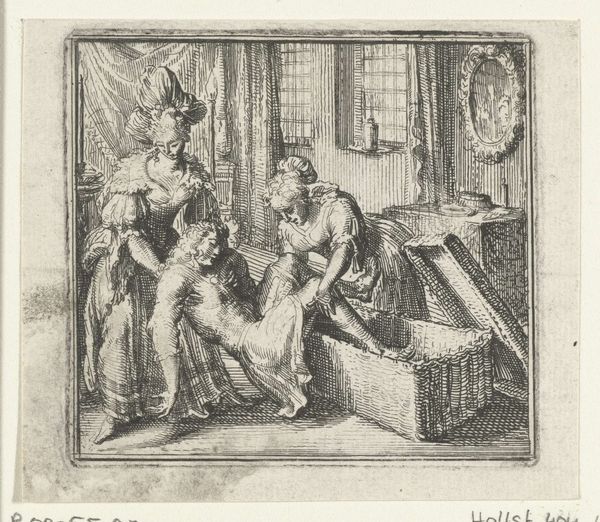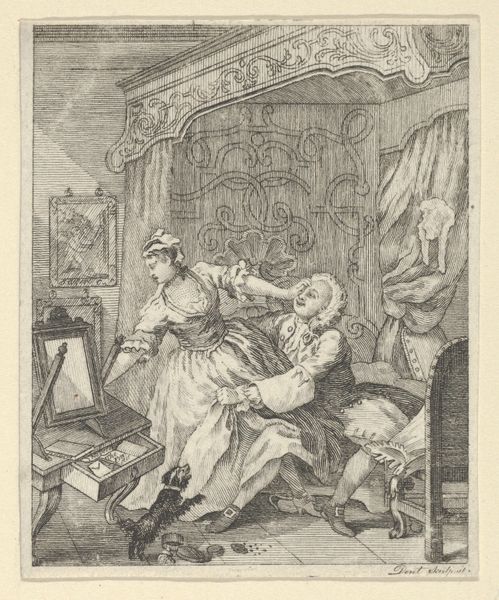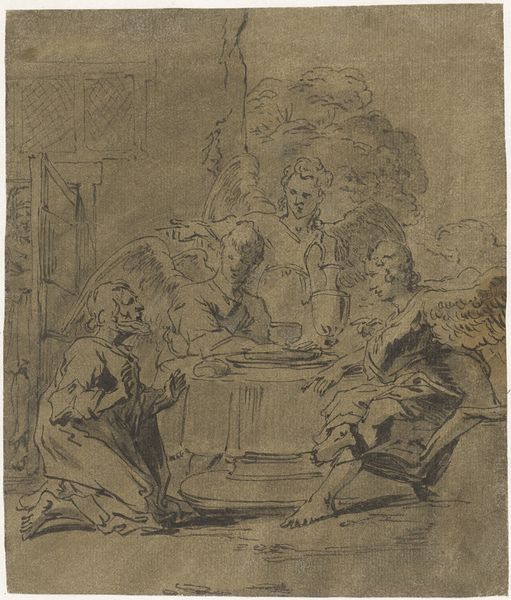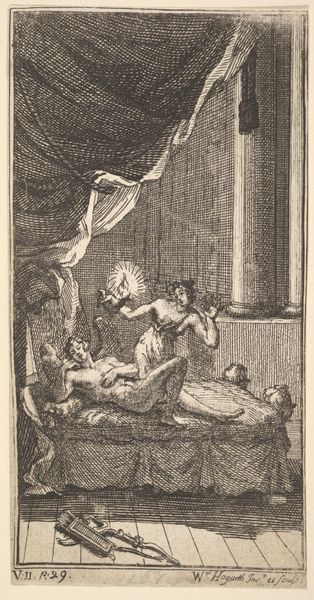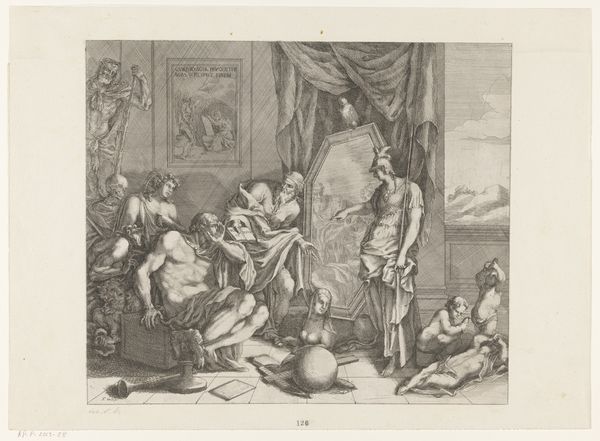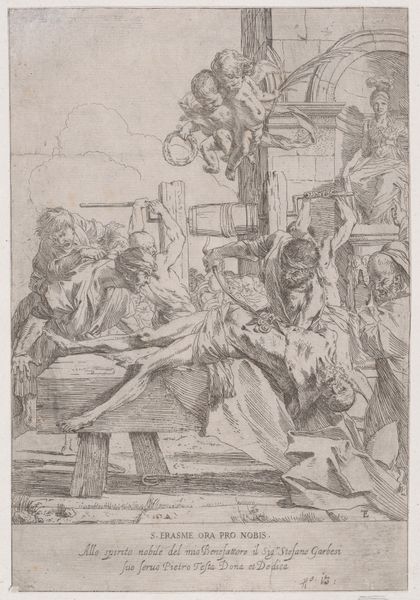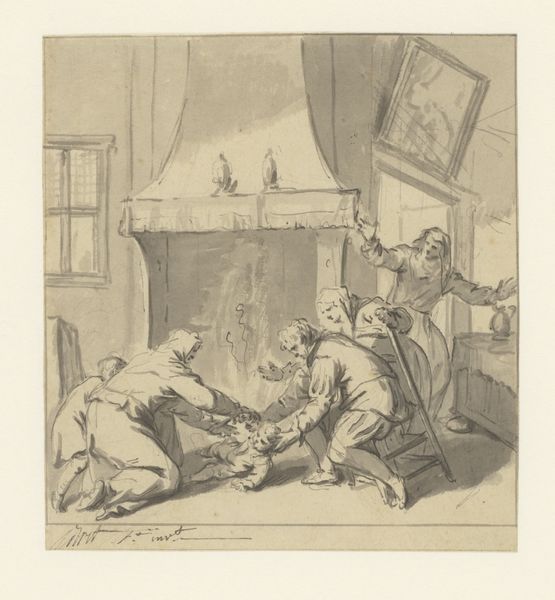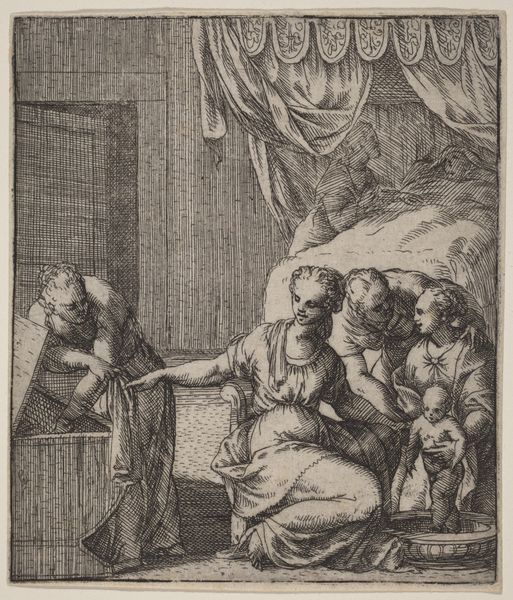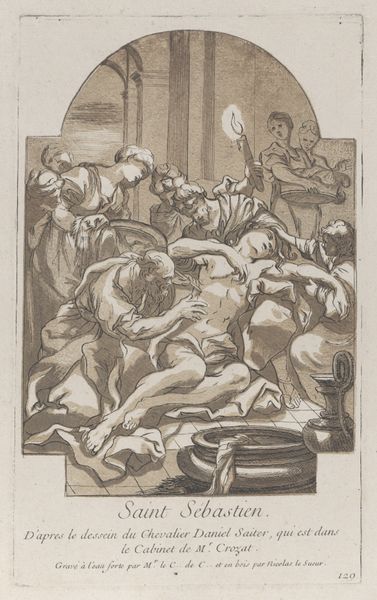
Miseries of Human Life: While Deep in Study and Lost in Thought in the Complicated Profession of a Taylor and All on a Sudden Disturbed by the Shrieks of a Woman Crying Cucumbers 1807
0:00
0:00
drawing, print, pen, engraving
#
drawing
#
narrative-art
# print
#
pen illustration
#
caricature
#
figuration
#
romanticism
#
line
#
pen
#
genre-painting
#
history-painting
#
engraving
Dimensions: Sheet: 12 5/8 × 9 1/8 in. (32 × 23.2 cm)
Copyright: Public Domain
Curator: Here we have Nicolaus Heideloff's print from 1807, "Miseries of Human Life: While Deep in Study and Lost in Thought in the Complicated Profession of a Taylor and All on a Sudden Disturbed by the Shrieks of a Woman Crying Cucumbers." It’s a small but incredibly detailed engraving, currently residing at the Metropolitan Museum of Art. Editor: Chaotic! That’s my first thought. All the frenetic lines create a scene of utter domestic pandemonium. The eye bounces around, struggling to find a point of calm amid the cacophony of textures and activity. Curator: Exactly! It speaks volumes about the era. Heideloff is using the scene to comment on the social position of working people—particularly tradesmen like tailors. His intent can be perceived as aligning to romanticize "common men". Notice how he uses the gendered labor dynamics of that time as a vehicle to comment on what seems to be a disturbance. Editor: Yes, you're right, it is worth thinking about Heideloff's employment of line as it reflects not only the chaos, but it can also imply class tensions. Take the figure of the cucumber seller versus the image of domestic toil. But consider how that flurry of etched lines, while appearing random, actually creates a visual harmony. See how the overlapping bodies and implements weave into a unified composition? Curator: I appreciate your close looking, as always! It reveals how Heideloff used art to portray working-class lives beyond mere drudgery. Here, we have a story with the poor artisan overwhelmed in contrast with the loud intrusion from someone whose source of income comes directly from natural resources. Editor: He definitely succeeded in creating a visual feast – albeit a slightly overwhelming one – for the viewer. Each small detail rewards further study. Curator: It’s also important to address the way gender roles affect the class' conditions in the piece. As we appreciate it formally, the composition calls us to contextualize it through both time and theory. Editor: A perfect intersection of visual and intellectual analysis. Now I see a bit less chaos and little more deliberate harmony.
Comments
No comments
Be the first to comment and join the conversation on the ultimate creative platform.
